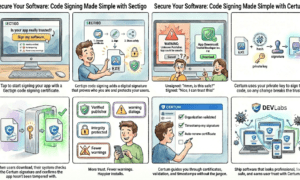When we are talking about sharing sensitive documents, financial records, legal contracts, or personal identification, security is of paramount importance. Conventional mail may subject the documents to time wastage, theft, or loss, and sending files by email without protection poses risks of hackers. The silver lining is that in the contemporary world, you can send documents via the post online, but with a secure means of file transportation that ensures your sensitive data is secure.
Here is how secure file transfers offer the most superior model of sending document files.
Why Security Matters in Document Mailing
Sensitive files may have sensitive or confidential information like social security numbers, bank account information, or legally-related information. When intercepted, these may result in identity theft, fraud, or regulatory non-compliance. This is why one should not use the usual email attachments or other insecure ways of file sharing and should instead use the services created with the aim of encrypting documents.
Encryption: The Foundation of Secure Transfers
Encryption is one of the most important characteristics of secure online mailing. Encryption mixes up the data in such a way that it is not readable by others. The contents of the file cannot be retrieved even when it may fall into the hands of hackers without the correct key. The most secure ones are based on AES-256 encryption, which is also used by a governmental agency and banks.
Password Protection for Extra Safety
Besides encryption, most mailing sites enable you to password-protect the files. This gives the added advantage of only recipients having the right password to open the document. Whenever relaying sensitive information, it is best to send the password by another means (such as a phone call or text) instead of in the same message.
Two-Factor Authentication (2FA)
There is also two-factor authentication, which offers extra protection. Using 2FA, the recipient of a document should prove his / her identity by entering the code received via email or mobile phone in order to view the document. Such a small precaution makes it impossible to enter unauthorized information, even in the event of an intruder entering the account of the recipient.
Tracking and Delivery Confirmation
The Secure mailing services provide you with live monitoring of your document open, send, and download. This is not only a delivery assurance feature but also leads to a digital audit trail, which is necessary in legal/ business terms. Tracking will enable you to validate access to the document by the correct person.
Choosing the Right Secure Platform
When deciding which service to use to send the documents via the Internet, one should consider such characteristics as:
- End-to-end encryption
- Password protection
- Two-factor authentication
- Digital signatures
- HIPAA or GDPR Compliance (depends on the industry)
Practical file transfer services are DocuSign, Dropbox Secure Transfer, Adobe Sign, eFa,x, and many others.
Best Practices for Sending Sensitive Documents
With secured platforms, do the following:
- Do not transfer files through an open signal to Wi-Fi.
- Ensure that your device receives the latest security patches.
- Frequently change passwords to curtail risks.
- Confirm twice the recipient of your message.
Conclusion
The sensitive files should not be subjected to security compromises. Through secure file transfer, the best way to mail documents online is achieved by combining three layers of protection: encryption, password, and authentication as needed, and tracking of the document. You can send sensitive documents without any worries of leakage or doubt as long as you select the appropriate service and abide by the best practices.





























